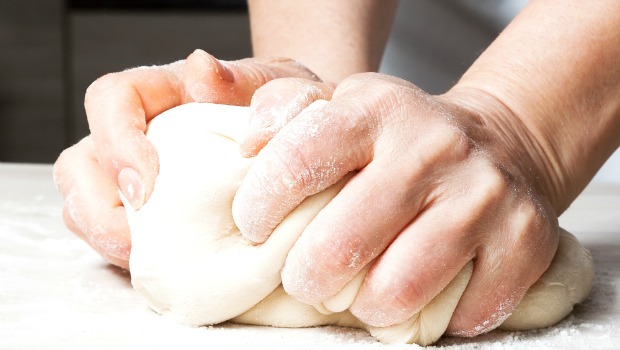Researchis showing us that if you live apositive, happy lifestyle right now, nottomorrow or 10 years from now, barringhealth issues, you could live a longerlife than someone who approacheseach day with a negative outlook.Among the most notable researchwe’ve found on this topic comes fromEd Diener, a Gallup senior scientist andformer University of Illinois psychologyprofessor. He took an in-depthlook at more than 150 studies looking atthe connections between aging andhappiness. From one that tracked thelife spans of almost 200 baseball playerswho were smiling in photos versus thosewho weren’t, to one that studiedScandinavian twins and yet another thatanalyzed how positive 180 nuns’autobiographies were when entering theconvent, what he found was one cleartheme: Happy people tend to havelonger, healthier lives.Who lives the longest?And in an interview with theUniversity of Illinois News Bureau, hewent so far as to say that, in his opinion,the data linking positive feelings andenjoying life to longevity is strongerthan the claims that obesity reduces aperson’s life span. That’s a pretty strongbelief, but it’s one we should thinkabout. Do you have the happiness andthe positive attitude it will take to carryyou to the century mark?First, let’s de�fine what happiness is and what it’s not: Happiness is not aboutbeing blind to the negatives in ourenvironment. Happiness is believingyou have the power to do somethingabout those negatives. If you want tocreate positive change in your life, if youwant to live a positive life, you have to� first change your reality.1. Keep a journalIn just two minutes,you can actually rewire your brain,allowing it to work more optimistically and more successfully. Write downthree new things that you’re grateful foreach day for 21 days in a row. At the endof that, your brain will start scanningthe world, not for the negative, but forthe positive. Then begin journalingabout one positive experience you’vehad over the past 24 hours and allowyour brain to relive it. These kinds ofexercises teach your brain that yourbehavior matters.2. Sleep mattersOne of our favorite studiesis from a 2008 issue of the Asia PacificManagement Review, which foundthat if you memorize sets of positive,neutral and negative words and thensleep for seven to eight hours, you willremember about 80 percent of all threelists a day later. If you miss a night ofsleep and stay up, say 36 hours, youstill remember most of the neutral andnegative words, but 59 percent fewerof the positive words! This is becauseyour brain interprets a lack of sleep asa threat to the central nervous system,then goes on high alert, scanning theworld for additional threats—that is,negatives.Get seven–eight hours of sleep per night."Fatigue severely impairs ourability to see the positives in life, makingsleep not just good for your health, butalso your wellbeing. So, turn off the TV,put away the book and get seven to eighthours of shut-eye.praise and gratitude, you are doomed to a reality devoid of those things.3. Stop fighting stressNo question, stress can be detrimentalto our health. Countless books andentire research journals are dedicated tothis topic. But that’s not the entire story:In fact, there is a huge body of researchshowing that stress can enhance ourwellbeing. There exists an alternatebut equally true reality in which stressis actually good for us.Make stress work for you, not against you"First, becomeaware of the stress. Second, look for themeaning behind it. (“I’m stressed aboutthis project because I know I’ll get apromotion if I succeed.”) And third,channel your stress response to improveyour motivation. Stress is a fight-or-flight response, and when you fight orflee from it, you only make it worse.Recognize it and then channel it inpositive ways, improving both your lifeand happiness.4. Expect the best outcomeDefensive pessimism,or assuming the worst until you areproved wrong, seems like a very safeposition—that way you are neversurprised and even have a plan in place.Sounds safe, right? The problem is,your brain constructs a world based onhow you expect it to look. So if you can’tanticipate accomplishment, meaning,praise and gratitude, you are doomedto a reality devoid of those things.Say, for example, you’re running amarathon. Don’t start out by thinking about the injuries you could sustain orabout how embarrassing it would beif you didn’t finish. Instead, start by planning a training schedule, thinkingabout how good you’ll feel as yourmiles start increasing, and anticipatingthat nice dinner you and your familywill eat after the race to celebrate youraccomplishment. Expect success, andyou’ll be more likely to find it.And this is just the beginning.There are a number of ways you, too,can be happier and live a more positivelifestyle. So, put on a smile and relishevery moment.ShawnAchoris theNew York Timesbest-selling author ofThe Happiness AdvantageandBefore Happiness.Shawn recently sat down with Oprah Winfrey to discuss his steps for achieving happiness on OWN’sSuper Soul Sunday.MichelleGielanis an expert on the science of positive communication and how to use it to fuel success.She formerly served as a national news anchor for CBS News, and is the founder of the Institute for Applied Positive Research, which works with companies and schools toraise employee engagement, productivity and happiness at work.
Read More









